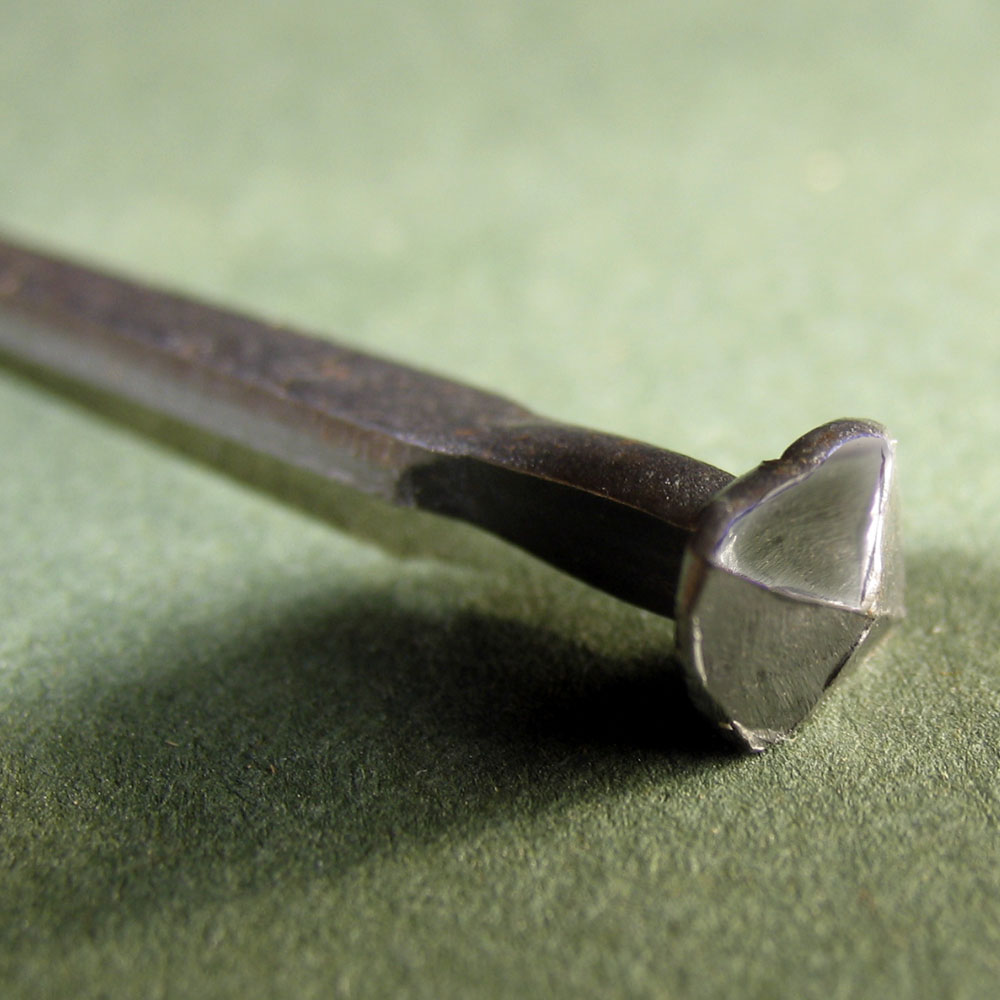
A traditionally made malleable iron cut nail with a rose head ideally suited for Clenching.
1in - approx. N/A per ½kg. General repair and construction of small objects
1¼ in - approx. 250 per ½kg. General repair and construction of small objects
1½in - approx. N/A per ½kg. General repair and construction of small/medium objects
2in - approx. 165 per ½kg. Repair of furniture/ internal door construction.
2½in - approx. 100 per ½kg. Door construction/ floor boards.
4in - approx. 30 per ½kg. Heavier work.
Cut Nails: Until the secrets of slitting iron sheets into strips were liberated from the highly secretive Swedish iron industry, all nails were forged one at a time on a blacksmiths anvil. Strip allowed the development of the Oliver - a workbench equipped with 3 treadles driving hammers that allowed children, as young as 7 years, to make as many as 250 nails per hour. During the late 18th and through the 19th centuries the nail market increased substantially in the Colonies and, especially, as America developed. The Oliver was eventually superceded by a new automatic process, devised firstly in America, then first introduced into Birmingham in 1811, and machine-made cut rose headed nails finally took over from the forged nail. The development of wire nails began when the first reliable supplies of coils of wire enabled their introduction from about 1900. As an aside, I recommend that you look up the history of cut nail making through the nineteenth century and its role in the development of both labour movements and the Methodist church.